Sprengel Deformity
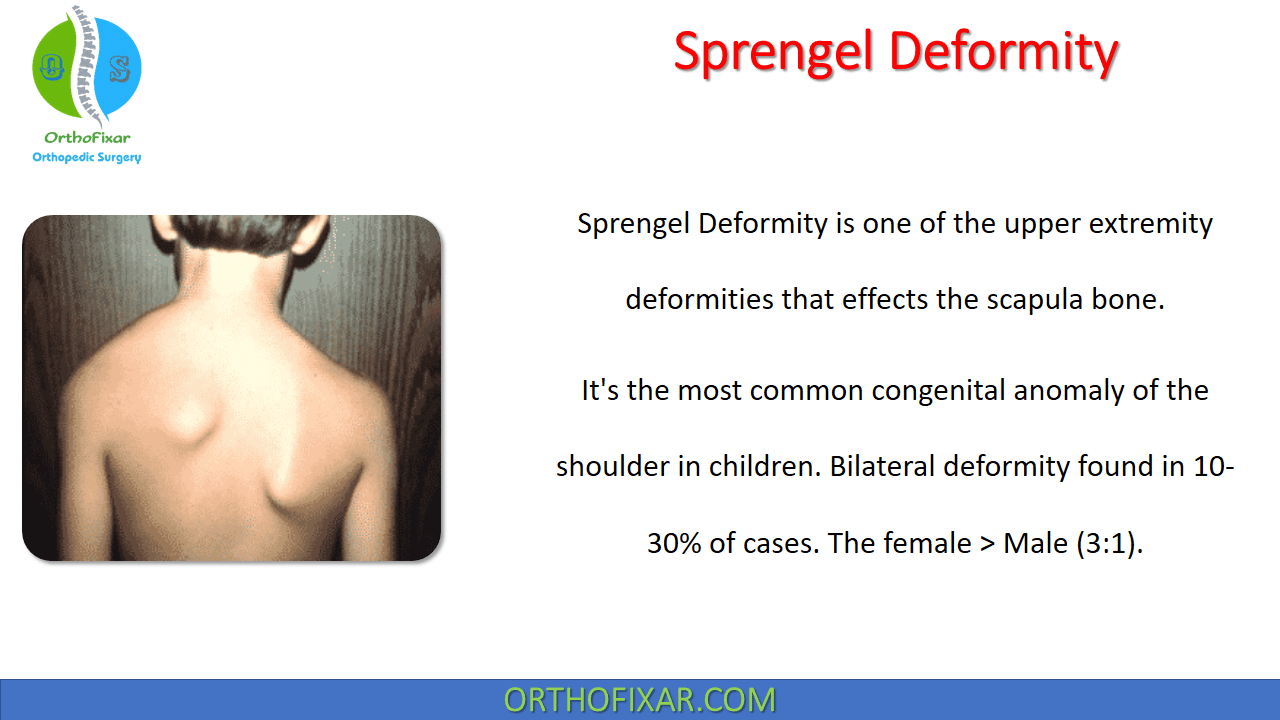
Sprengel Deformity is one of the upper extremity deformities that effects the scapula bone.
It’s the most common congenital anomaly of the shoulder in children. Bilateral deformity found in 10-30% of cases. The female > Male (3:1).
What are the deformities seen in Sprengel Deformity?
Many deformities found in Sprengel deformity; these include:
- The scapula lies more superiorly in relation to the thoracic cage.
- The scapula is hypoplastic (smaller than normal), misshapen and medially rotated.
- Cervical ribs, malformations of ribs.
- Anomalies of the cervical vertebrae (Klippel-Feil syndrome).
- One or more scapular muscles are partly or completely absent (rare).
In some cases, an abnormal connection develops between the scapula and the spine that can limit movement of the shoulder. The connection is from the superior angle of the scapula to the spinous process, lamina, or transverse process of one or more lower cervical vertebrae.
This connection could be:
- Fibrous bands or omovertebral bar.
- Bony structure or omovertebral bone.
See Also: Clavicle Anatomy
Causes of Sprengel Deformity
The exact cause of the deformity is unknown yet.
One theory of the etiology is that during fetal development, the scapula forms near the cervical spine. In the third month of pregnancy, the scapula moves down to its normal position. In Sprengel deformity, the scapula fails to moves down.
Other theory suggest that the deformity is due to the interruption of embryonic subclavian blood supply.
In some families, the deformity may occur as a genetic defect (autosomal dominant).
Associated Deformity
Other congenital deformities can be associated with Sprengel Deformity:
- Klippel-Feil syndrome (30% of patients have Sprengel deformity).
- Kidney disease.
- Scoliosis.
- Diastematomyelia.
Clinical Evaluation
Patient mostly present to evaluate for scoliosis deformity. The deformity is usually painless.
On physical examination:
- Limitation of abduction of the shoulder joint.
- The scapula appears elevated and small than the opposite side.
- Inability to palpate the medial border of scapula.
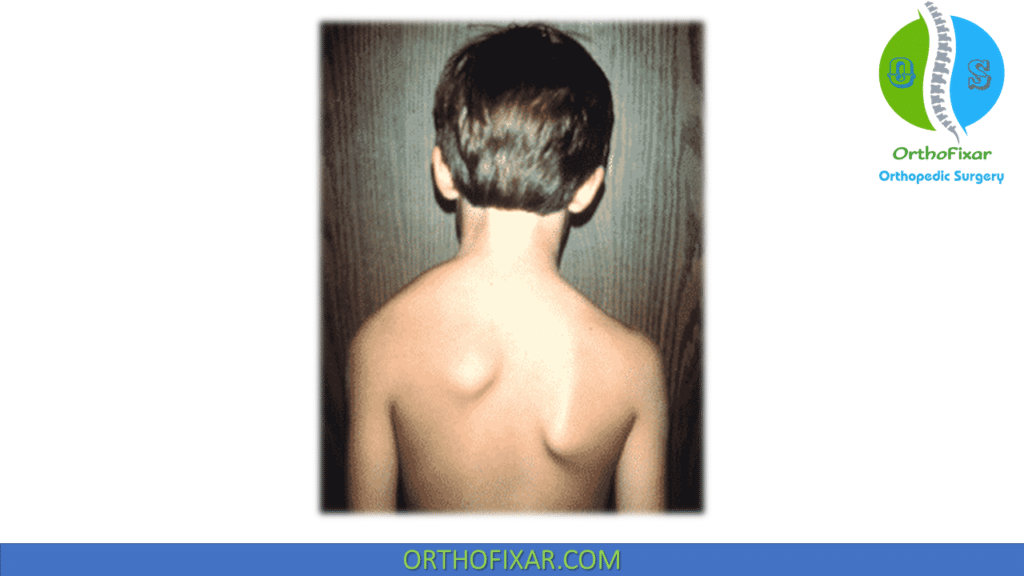
Imaging Evaluation
Chest X-ray shows the elevated scapula and a small sized scapula compared to the normal side.
Three-dimensional CT can be helpful in delineating the deformity and planning scapuloplasty.
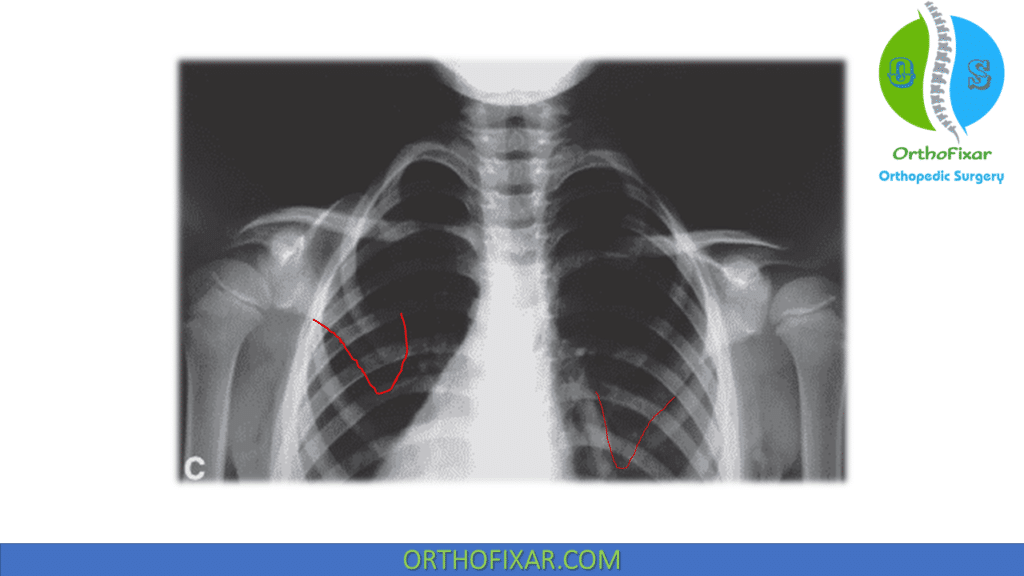
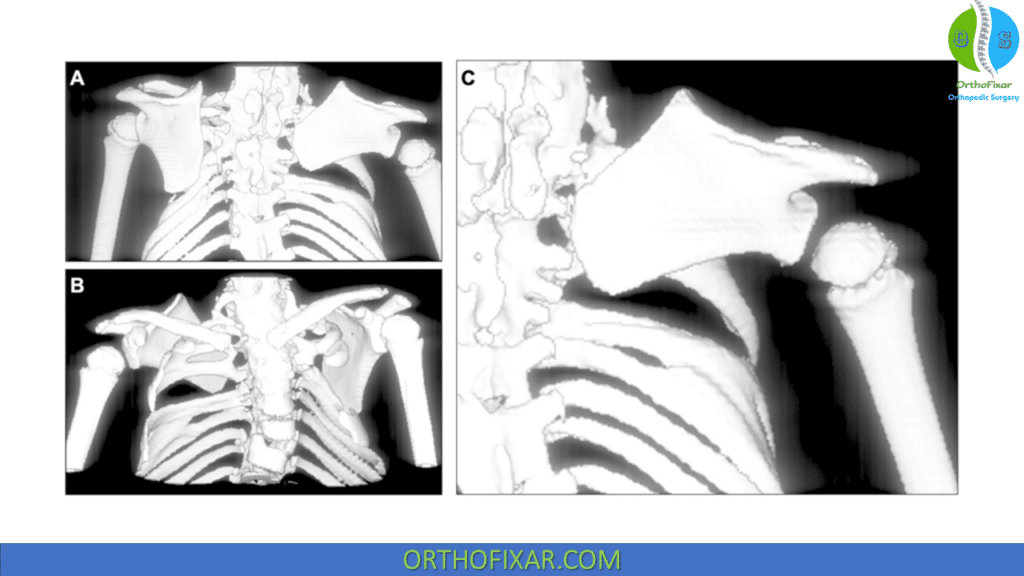
Sprengel Deformity Treatment
No treatment is required if the deformity and impairment are mild.
Indications of surgery in Sprengel Deformity:
- Severe deformity with impaired function (abduction < 110-120 degrees).
- Cosmetic reasons.
The ideal time of surgery is between 3-8 years, in older children, an attempt to bring the scapula inferiorly to its normal level can injure the brachial plexus.
See Also: Brachial Plexus Palsy
Operative Procedures:
Many procedures were described for correction of Sprengel Shoulder Deformity, some of them are:
Green Procedure:
This procedure includes a release of muscles from the scapula along with excision of the supraspinatus portion of the scapula and any omovertebral bone. The scapula is moved inferiorly to a more normal position, and the muscles are reattached. Other modifications include suturing the scapula into a pocket in the latissimus dorsi after rotating the scapula and moving it caudad to a more normal position, and avoiding dissection of the serratus anterior muscle so that mobilization is begun immediately postoperatively.
Woodward Procedure:
Woodward described transfer of the origin of the trapezius muscle to a more inferior position on the spinous processes. During surgery, attention should be directed to placing the spine of the scapula at the same level as that on the opposite side, rather than aligning exactly the inferior angles of the scapula.
To avoid brachial plexus palsy, several authors recommended morcellization of the clavicle on the ipsilateral side as a first step in the operative treatment of Sprengel deformity. This is not a routine part of surgical treatment but is recommended in severe deformity or in children who show signs of brachial plexus palsy after surgical correction.
Better results are obtained with the Woodward procedure because:
- The muscles are incised farther from the scapula, which lowers the risk of formation of a scarkeloid that may fix the scapula in poor position.
- A larger mobilization is possible.
- The postoperative scar is not as thick as with Green’s procedure.
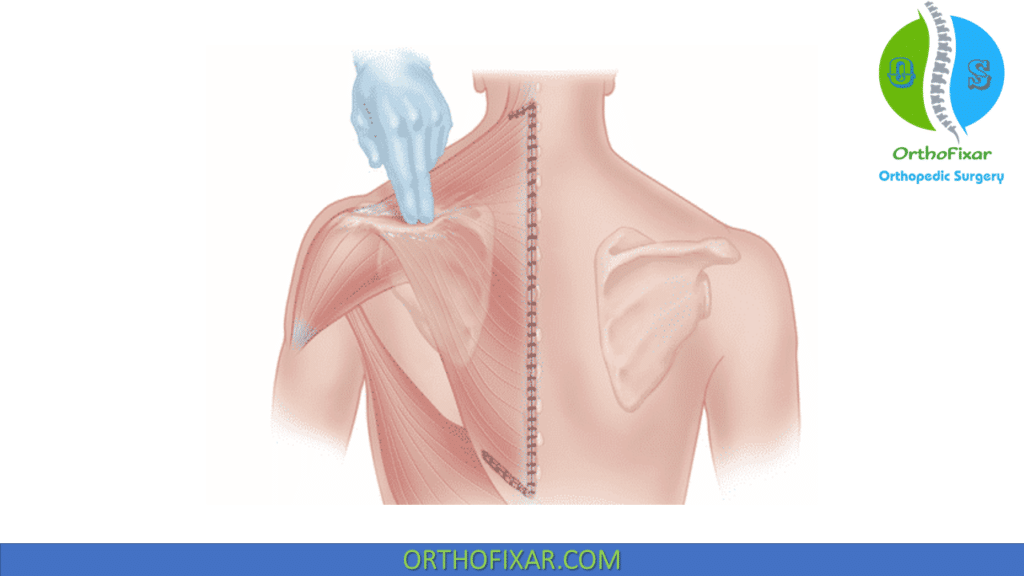
References & More
- Campbel’s Operative Orthopaedics 12th edition Book.
- Millers Review of Orthopaedics -7th Edition Book.
- Kadavkolan AS, Bhatia DN, Dasgupta B, Bhosale PB. Sprengel’s deformity of the shoulder: Current perspectives in management. Int J Shoulder Surg. 2011 Jan;5(1):1-8. doi: 10.4103/0973-6042.80459. PMID: 21660191; PMCID: PMC3109767.
- Harvey EJ, Bernstein M, Desy NM, Saran N, Ouellet JA. Sprengel deformity: pathogenesis and management. J Am Acad Orthop Surg. 2012 Mar;20(3):177-86. doi: 10.5435/JAAOS-20-03-177. PMID: 22382290.
- Bilateral Sprengel’s Deformity Treated with the Modified Woodward Procedure: Technique and Outcome of 3 Consecutive Case Reports – Scientific Figure on ResearchGate. Available from: https://www.researchgate.net/figure/Three-dimensional-computed-tomography-CT-images-delineating-the-bilateral-Sprengels_fig3_348805065 [accessed 12 Feb, 2023]
- Lifetime product updates
- Install on one device
- Lifetime product support
- Lifetime product updates
- Install on one device
- Lifetime product support
- Lifetime product updates
- Install on one device
- Lifetime product support
- Lifetime product updates
- Install on one device
- Lifetime product support